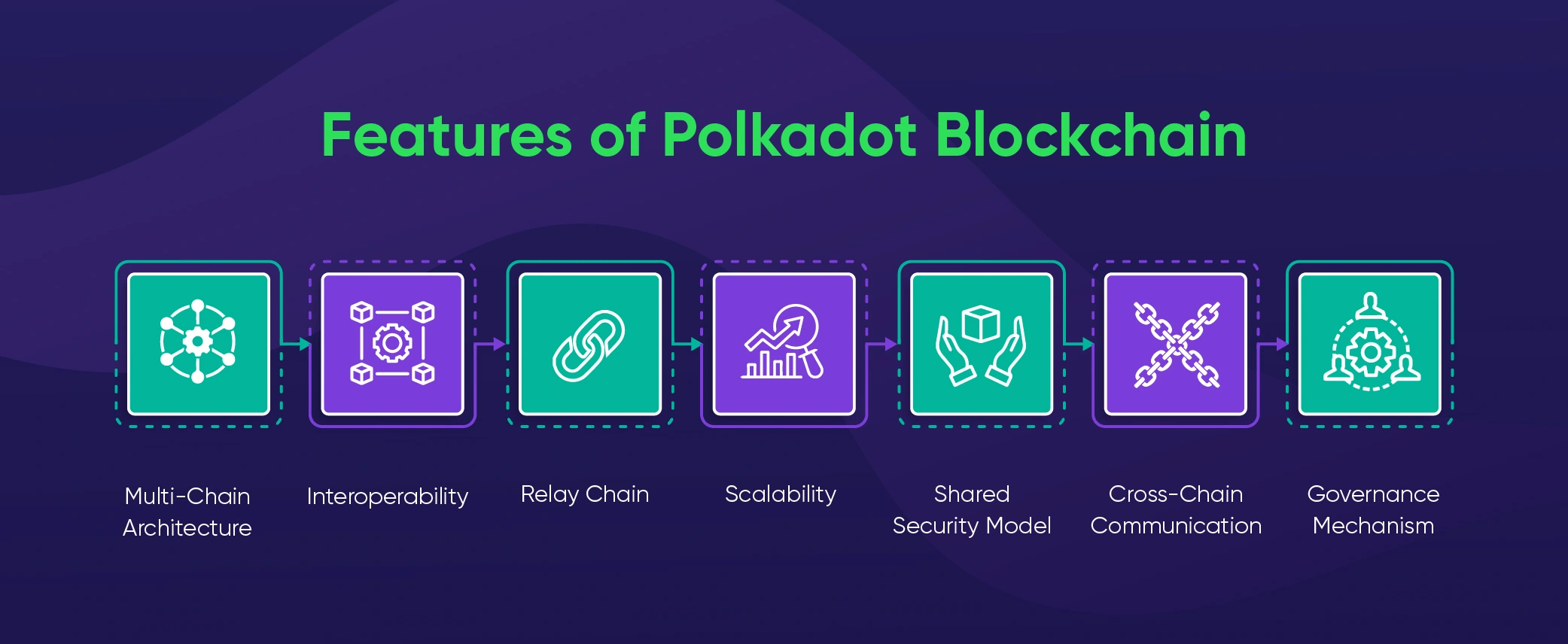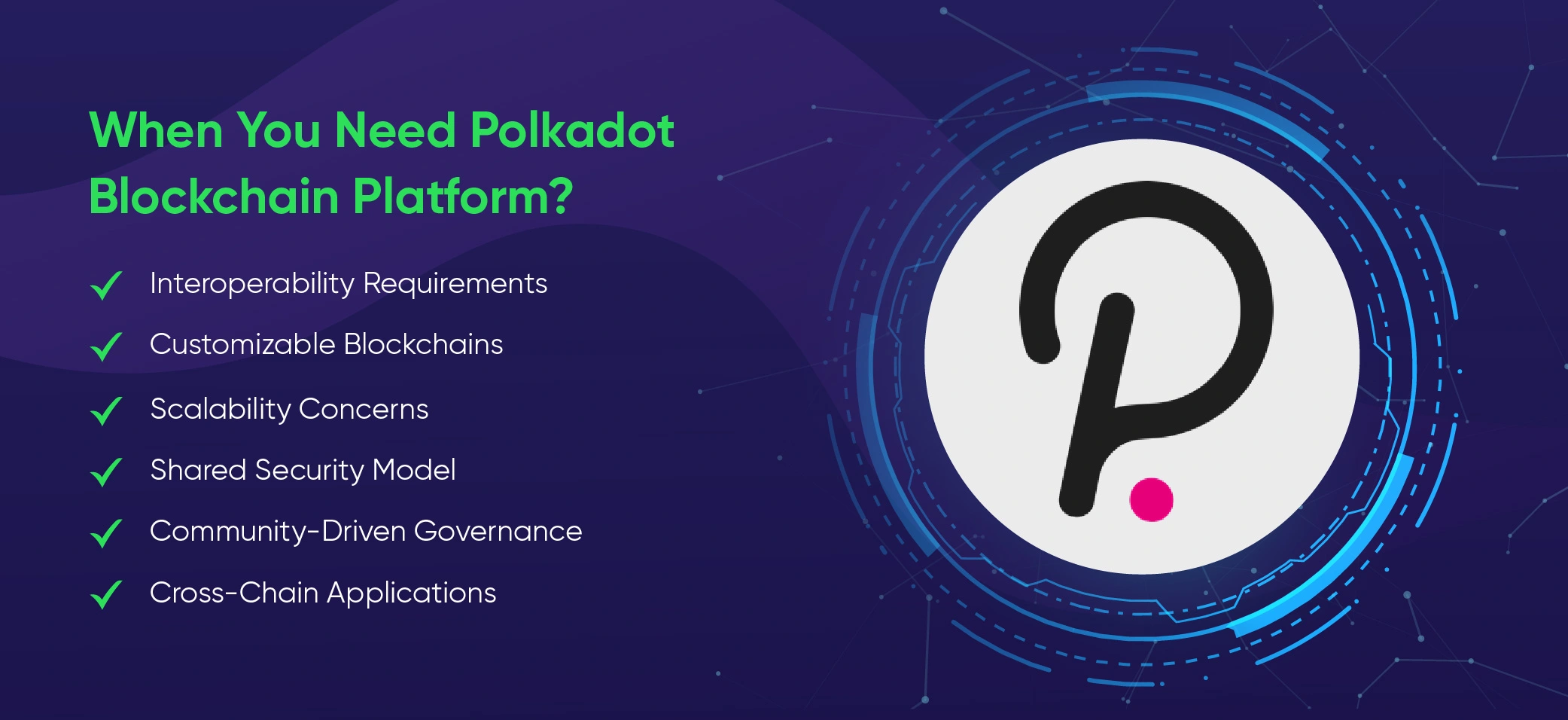
Introduction
Web3 & Blockchain Consultancy :
Polkadot Blockchain Network: Guide to Decentralized Web3 Ecosystem
Polkadot, with a market cap of about $20 billion, is presently ranked 12th among all cryptocurrencies. There is now 1.1 billion DOT in total supply, with slightly less than a billion DOT in use. Unlike Web 2.0, Polkadots’ primary goal is to build a fully decentralized internet where people have total control over their identities and sensitive data. We will go into greater detail about the efforts they are now making, including the use of parachains, to achieve this goal.What is Polkadot Blockchain?
Polkadot is a multi-chain network designed to facilitate interoperability between different blockchains, creating a decentralized and interconnected Web3 ecosystem. Conceived by Dr. Gavin Wood, co-founder of Ethereum, Polkadot aims to address scalability, governance, and compatibility issues faced by existing blockchain networks. Gavin and Peter, the founders of Polkadot, are actively interested in the “Web3 Foundation,” whose primary project is Polkadot, which aims to realize a functional and decentralized Web 3.0. Grants are being offered by the Web3 Foundation, a Swiss foundation, for the creation of decentralized applications and projects that utilize parachains to be developed on the Polkadot ecosystem. Additionally, it collaborates with organizations such as Polychain Capital and Parity Technologies to bring together the brightest minds and enthusiastic investors in the field. Polkadot provides an interoperability protocol that employs segments, or shards, to grow the network to facilitate a fully decentralized, user-controlled web. It can establish connections between oracles, public networks, and private chains, enabling a new type of web in which separate blockchains can communicate information and conduct transactions without requiring trust. The Polkadot network’s native token currency, known as DOT, has Plancks as its smallest unit. It makes payments, staking, reward incentives, transaction fees, network governance, and other bonding operations easier. Bonding involves locking up tokens to join new chains to the Polkadot network or to play a different function in the ecosystem.How Does Polkadot Network Works
The Polkadot network is a groundbreaking blockchain platform designed to address key challenges in the decentralized ecosystem, offering a unique and innovative approach to interoperability, scalability, and shared security. At the heart of Polkadot’s architecture is the concept of a multi-chain framework. The network consists of a central relay chain and multiple interconnected parachains. Parachains are individual blockchains with specialized functionalities, allowing them to cater to diverse use cases. These para chains run in parallel, enhancing scalability by processing transactions simultaneously. The relay chain serves as the backbone of Polkadot, providing a secure and coordinated environment for communication between parachains. It ensures the overall security of the network and facilitates the transfer of messages and value between different parachains. This shared security model is a distinctive feature of Polkadot, as all parachains benefit from the security provided by the relay chain. Cross-chain communication is a pivotal aspect of Polkadot’s functionality. Parachains can seamlessly communicate with each other through the relay chain, allowing for the development of complex decentralized applications that span multiple chains. This interoperability sets Polkadot apart as a platform that encourages collaboration and synergy among diverse blockchain projects. With Polkadot, money may be transferred between digital wallets via a public and private key encryption scheme. The address you provide to receive money is the hash of the public key, and the private key functions as a password by enabling and broadcasting transactions to the network. These pending transactions are validated in blocks of transactions that make up the Polkadot blockchain, approximately every six seconds. DOT holders can stake tokens to participate as Nominators, choosing to back up to 16 Validators as trustworthy candidates with their stake. Those interested in maintaining the entire network can run a Validator node, while Collators on Polkadot maintain Parachain nodes and Fishermen nodes police the network. After that, validators create new blocks, approve Parachain blocks, and ensure finality. Later on, we’ll go over these positions in more detail.Features of Polkadot Blockchain
Polkadot, a groundbreaking blockchain platform, boasts a set of distinctive features that set it apart in the realm of decentralized networks. Here are the key features of the Polkadot blockchain:
Multi-Chain Architecture:
Polkadot’s multi-chain architecture revolutionizes blockchain versatility, featuring interconnected parachains, each tailored for specific use cases. This design allows diverse applications to run simultaneously, promoting a more efficient and specialized network.Interoperability:
Polkadot prioritizes interoperability, enabling seamless communication between parachains through its relay chain. This interconnectedness fosters collaboration and data-sharing, creating a network where different blockchains complement each other, ushering in a new era of decentralized cooperation.Relay Chain:
The relay chain serves as Polkadot’s backbone, ensuring security and facilitating communication between parachains. It acts as a conduit for messages and value transfer, providing a cohesive structure for the entire network.Scalability:
Addressing scalability challenges, Polkadot’s multi-chain approach allows parallel processing of transactions, enhancing the network’s scalability. This capability accommodates increased transaction throughput, meeting the demands of a growing user base.Shared Security Model:
Polkadot employs a shared security model, where all parachains benefit from the collective security of the network. This ensures a robust and resilient ecosystem, as the relay chain safeguards the integrity of the entire platform.Cross-Chain Communication:
Polkadot’s cross-chain communication empowers parachains to exchange messages and transactions. This feature unlocks the potential for complex decentralized applications that span multiple parachains, promoting a more interconnected and versatile blockchain ecosystem.Governance Mechanism:
DOT, Polkadot’s native cryptocurrency, plays a pivotal role in the platform’s governance. DOT holders have the authority to propose and vote on protocol upgrades, fostering a decentralized decision-making process that reflects the community’s consensus.Ethereum vs Polkadot: Comparison Between Ethereum and Polkadot
Ethereum and Polkadot are incredibly strong and creative projects. They are both scalable by using parallel execution, and they can both produce decentralized applications and smart contracts. Despite their similarities, these two platforms are different in a few areas. One of the primary differences is the design goals. Ethereum aims to provide a platform for distributed finance and the execution of smart contracts, whereas Polkadot offers a framework for building your blockchain and the ability to connect many blockchains.
Feature |
Polkadot |
Ethereum |
|---|---|---|
Architecture |
Multi-chain framework with relay chain and parachains. | Single-chain architecture. |
Interoperability |
Emphasis on seamless communication between parachains. | Limited interoperability; primarily a standalone chain. |
Scalability |
Parallel processing of transactions across parachains. | Transitioning to Ethereum 2.0 for enhanced scalability. |
Consensus Mechanism |
Nominated Proof-of-Stake (NPoS). | Transitioning from Proof-of-Work (PoW) to PoS in Ethereum 2.0. |
Governance |
DOT holders participate in a decentralized governance model. | Transitioning to Ethereum 2.0 for a more decentralized governance model. |
Smart Contracts |
Supports smart contracts on parachains. | A pioneer in smart contract functionality with Ethereum Virtual Machine (EVM). |
When Do You Need Polkadot Blockchain Platform?
The Polkadot blockchain platform is particularly well-suited for various scenarios where specific features and capabilities offered by its design are advantageous. Here are some situations where you might consider using the Polkadot platform: